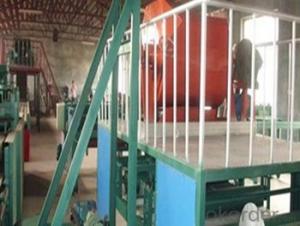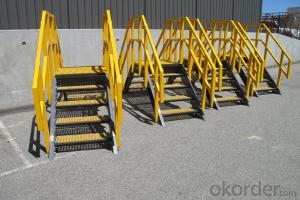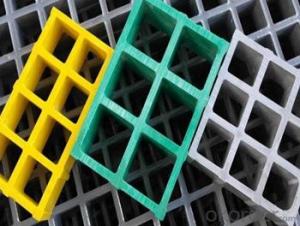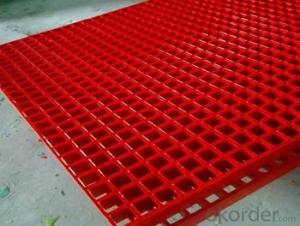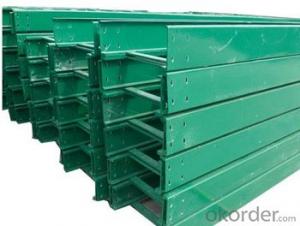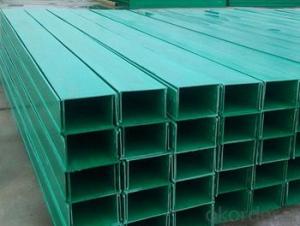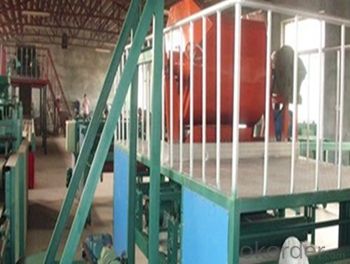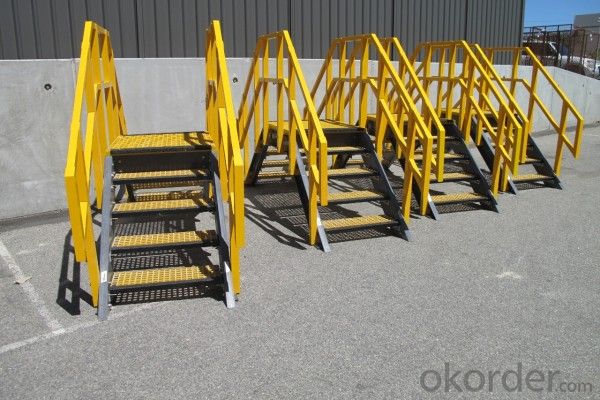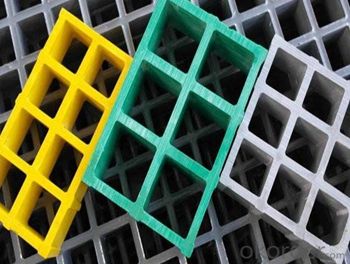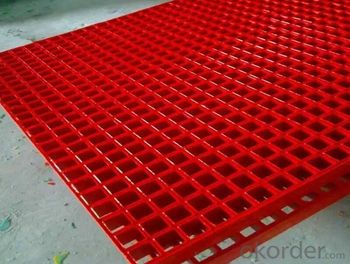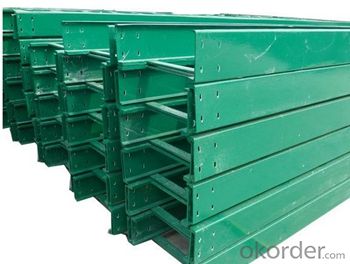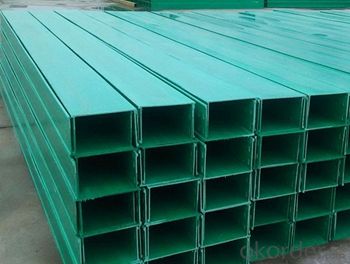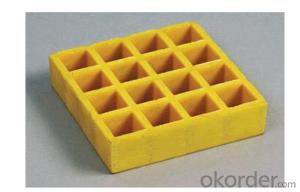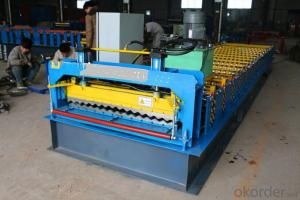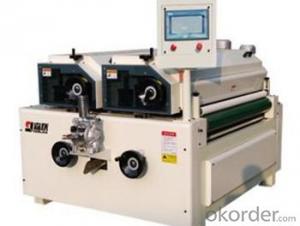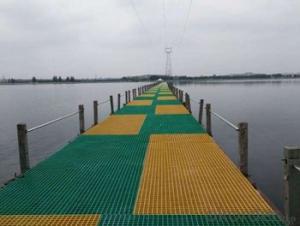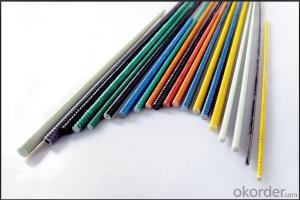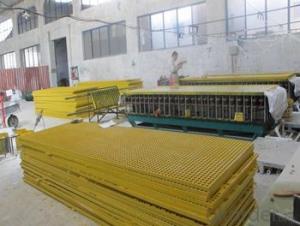FRP Pultrusion Profiles - Anti-Corrosion and Anti-Rust Machine Made in China
- Loading Port:
- Tianjin
- Payment Terms:
- TT OR LC
- Min Order Qty:
- 55 m.t.
- Supply Capability:
- 30000 m.t./month
OKorder Service Pledge
OKorder Financial Service
You Might Also Like
Specification
PRODUCT DESCRIPTION
Pultruded grating is made by a par ticular assembly process, which using “I” shape as its main load-bearing and special rod to go through the bearing bar. Pultruded grating include the standard grating and the custom grating, the custom grating can be designed to meet customer’s requirement or special using condition by changing the shape, size and space of the bearing bars, the sur face can be covered with lozenge panel, grit panel, or added the anti-slippery sand directly.
1.SPECIFICATION
The standard space between two crossbars is 6 inch or 12 inch.
Thickness (mm) | Bar width (mm) | Open space (mm) | Open rate (%) | Approx weight (kg/m |
25.4 | 15.2 | 22.8 | 60 | 13.2 |
25.4 | 15.2 | 15.2 | 50 | 15.9 |
25.4 | 15.2 | 10.1 | 40 | 18.5 |
25.4 | 40 | 10.8 | 21 | 14.5 |
38.1 | 15.2 | 22.8 | 60 | 15.8 |
38.1 | 15.2 | 15.2 | 50 | 19.1 |
38.1 | 15.2 | 10.1 | 40 | 22.4 |
50.8 | 25.4 | 25.4 | 50 | 16.6 |
50.8 | 25.4 | 12.7 | 33 | 21.1 |
2.CHOICE FOR PULTRUDED GRATING
Resin: GP resin, ISO resin,VE resin,Phenolic resin
Color choice: Yellow, gray, green, custom color
Surface choice: Groove surface, grit surface, lozenge cover surface
3.FEATURES
a. Anti-corrosion and anti-rust
b. Light weight and high strength
c. Anti-flammable
d. Anti- fatigue
e. Safe and anti-slippery
f. Anti-ageing
g. Easy of maintenance
h. Excellent electromagnetism property
i. Good economic benefit
4.FIELDS SERVED
Sewage treatment,
water supply and drainage,
chemical industry,
oil industry,
power engineering,
pulp and paper,
construction engineering,
spinning, marine engineering.
COMPANT DESCRIPTION
CNBM,China National Building Materials Group is a state-owned enterprise in charge of administrative affairs in china building materials industry. Established in 1984, CNBM is a large group corporation of building materials with total assets of 25 billion RMB and a total staff of 30,000.CNBM now owns 200 subordinating firms of solely owned and joint-venture companies.
CNBM International Corporation is one subsidiary of CNBM, we focus on offering good-quality products,professional service and complete solution to our customers. Strong delivery capacity, advanced technology& management, strong financing capability and excellent after-sale service are our advantages in sharing international market.
PACKAGING & DELIVERY
1.PACKAGING DETAILS:
standard packing or your requirement
2.DELIVERY DETAIL:
Shipped in 30 days after payment
PICTURES
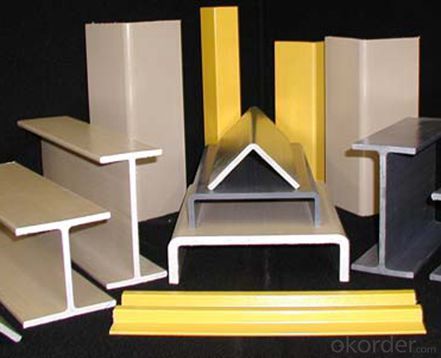
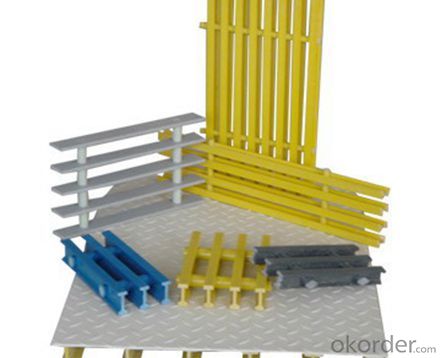
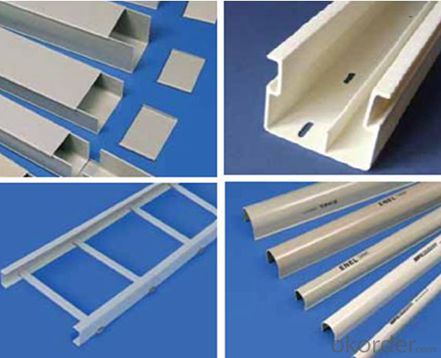
- Q: Can FRP pultrusion profiles be used in water treatment plants?
- Yes, FRP (Fiber Reinforced Polymer) pultrusion profiles can be used in water treatment plants. FRP pultrusion profiles offer several advantages that make them well-suited for use in this industry. Firstly, FRP pultrusion profiles are highly corrosion resistant. Water treatment plants often have aggressive environments with exposure to chemicals and moisture, which can cause corrosion and degradation of traditional materials like steel. However, FRP pultrusion profiles are immune to corrosion, making them an ideal choice for water treatment applications. Secondly, FRP pultrusion profiles have excellent strength-to-weight ratios. This means that they provide high structural integrity while being lightweight, making them easier to handle and install in water treatment plants. Additionally, their high strength allows them to withstand the loads and pressures typically encountered in these environments. Furthermore, FRP pultrusion profiles are electrically non-conductive. This is particularly advantageous in water treatment plants, where there may be a need to isolate electrical equipment or components to prevent short circuits and protect personnel. FRP profiles provide a safe and reliable solution in such cases. Lastly, FRP pultrusion profiles have a long service life with minimal maintenance requirements. They do not rot, rust, or corrode, ensuring durability and longevity even in harsh water treatment conditions. This reduces downtime and maintenance costs, making FRP profiles a cost-effective choice for water treatment plant applications. Overall, FRP pultrusion profiles are an excellent choice for use in water treatment plants due to their corrosion resistance, high strength-to-weight ratio, electrical non-conductivity, and long service life. Their use can contribute to improved efficiency, reduced maintenance, and increased durability in water treatment processes.
- Q: Can FRP pultrusion profiles be used in the construction of safety barriers?
- Yes, FRP pultrusion profiles can be used in the construction of safety barriers. FRP (Fiber Reinforced Polymer) pultrusion profiles offer high strength-to-weight ratio, corrosion resistance, and durability, making them suitable for safety barrier applications. They can withstand harsh environmental conditions and provide excellent impact resistance, making them an ideal choice for ensuring safety in various industries such as construction, transportation, and infrastructure.
- Q: How do FRP pultrusion profiles handle cyclic torsion loads?
- FRP pultrusion profiles have been carefully designed to effectively handle cyclic torsion loads. The exceptional properties of FRP materials make them highly resistant to fatigue, which makes them perfectly suitable for applications where cyclic torsion loads are anticipated. A significant advantage of FRP pultrusion profiles lies in their remarkable strength-to-weight ratio. By reinforcing them with fibers like glass or carbon, these profiles exhibit outstanding tensile strength and stiffness, enabling them to withstand repeated torsional forces without any deformation or failure. Furthermore, FRP pultrusion profiles display superior resistance to corrosion and chemical degradation when compared to traditional materials like steel. This resistance guarantees that the profiles maintain their structural integrity even in harsh environments where cyclic torsion loads might be prevalent. The pultrusion manufacturing process also contributes to the capability of FRP profiles to handle cyclic torsion loads. During pultrusion, continuous fibers are impregnated with a polymer resin and then drawn through a heated die, where they are cured and shaped into the desired profile. This process ensures a uniform distribution of fibers throughout the profile, resulting in enhanced strength and stiffness in all directions, including torsion. To further enhance the performance of FRP pultrusion profiles under cyclic torsion loads, engineers utilize design techniques such as optimizing the fiber orientation and selecting suitable resin systems. These measures help evenly distribute the torsional forces across the profile, reducing stress concentrations and enhancing fatigue resistance. In conclusion, FRP pultrusion profiles have been specifically engineered to handle cyclic torsion loads. Their remarkable strength-to-weight ratio, corrosion resistance, and uniform fiber distribution make them an ideal choice for applications where cyclic torsion loads are a concern.
- Q: Are FRP pultrusion profiles resistant to caustic solutions?
- FRP pultrusion profiles are known for their resistance to caustic solutions. The combination of reinforcing fibers and the polymer matrix used in FRP pultrusion provides exceptional chemical resistance. Unlike traditional materials like steel or wood, which can be corroded or degraded by strong alkaline substances, FRP pultrusion profiles are highly resistant to chemical attack. This makes them suitable for industries that frequently encounter caustic solutions, such as chemical processing, wastewater treatment, and marine environments. However, it is important to refer to the manufacturer's specifications and guidelines to ensure compatibility between specific caustic solutions and the chosen FRP pultrusion profile.
- Q: Can FRP pultrusion profiles be used in railway applications?
- FRP pultrusion profiles are applicable in railway industries due to their high strength-to-weight ratio, durability, and resistance to corrosion. They can be utilized for various railway components such as sleepers, bridges, platforms, cable management systems, and structural support for tracks. These profiles possess exceptional mechanical properties, including high stiffness and tensile strength, which are crucial for maintaining the safety and integrity of railway infrastructure. Moreover, FRP pultrusion profiles exhibit low thermal conductivity, making them resistant to extreme temperature fluctuations commonly encountered in railway applications. Another significant advantage of employing FRP pultrusion profiles in railway settings is their resistance to corrosion. Unlike steel, FRP does not rust or corrode when exposed to moisture or chemicals. Consequently, the need for regular maintenance is reduced, thus extending the lifespan of railway components and reducing costs in the long term. Furthermore, FRP pultrusion profiles can be easily tailored to meet specific design requirements. They can be manufactured in various shapes, sizes, and colors, allowing engineers to create customized solutions for diverse railway applications. In summary, the use of FRP pultrusion profiles in railway industries offers numerous benefits, including lightweight design, high strength, corrosion resistance, and customization options. These qualities make FRP an appealing alternative to traditional materials, thereby enhancing the safety, efficiency, and longevity of railway infrastructure.
- Q: Are FRP pultrusion profiles resistant to chemicals used in mining operations?
- Yes, FRP (Fiber Reinforced Polymer) pultrusion profiles are highly resistant to chemicals commonly used in mining operations. The composite material used in FRP pultrusion profiles is inherently corrosion-resistant and can withstand the harsh chemical environment typically encountered in mining. Additionally, FRP pultrusion profiles offer excellent resistance to acids, alkalis, solvents, and other chemicals, making them a durable and reliable choice for mining applications.
- Q: Can FRP pultrusion profiles be used in chemical processing plants?
- Yes, FRP (Fiber Reinforced Polymer) pultrusion profiles can be utilized in chemical processing plants. FRP is resistant to corrosion, chemicals, and extreme temperatures, making it an ideal material choice in such environments. Additionally, FRP pultrusion profiles offer high strength-to-weight ratio and low maintenance requirements, making them suitable for various applications within chemical processing plants.
- Q: Can FRP pultrusion profiles be used in electrical insulation applications?
- FRP pultrusion profiles are capable of being utilized in electrical insulation applications. They possess exceptional electrical insulation properties, rendering them appropriate for a broad range of electrical applications. The superior dielectric strength of FRP materials ensures the efficient containment of electrical currents within designated pathways, thus preventing leakage and electrical hazards. Moreover, FRP profiles exhibit low electrical conductivity, thereby decreasing the likelihood of electrical shorts and enhancing overall safety in electrical insulation applications. The non-magnetic characteristics of FRP materials are also advantageous as they eliminate the potential for electromagnetic interference (EMI) in sensitive electrical systems. Furthermore, FRP pultrusion profiles are lightweight, resistant to corrosion, and boast a lengthy operational lifespan. This renders them an economical and robust solution for electrical insulation applications.
- Q: How do FRP pultrusion profiles compare to traditional building materials?
- FRP pultrusion profiles offer numerous advantages over traditional building materials. They are lightweight yet incredibly strong, providing high structural integrity. These profiles are resistant to corrosion, chemicals, and UV radiation, ensuring long-term durability. Additionally, FRP pultrusion profiles have excellent insulation properties, making them ideal for various applications. They are also easy to install, require minimal maintenance, and are cost-effective in the long run. Overall, FRP pultrusion profiles outperform traditional building materials in terms of strength, durability, versatility, and efficiency.
- Q: Can FRP pultrusion profiles be used in the construction industry?
- Yes, FRP (Fiber Reinforced Polymer) pultrusion profiles can be used in the construction industry. FRP pultruded profiles offer several advantages that make them suitable for various construction applications. Firstly, FRP pultrusion profiles are lightweight yet exceptionally strong. This makes them an excellent choice for construction projects as they provide high strength-to-weight ratio, reducing the overall weight of the structure while maintaining structural integrity. This can be particularly advantageous in applications such as bridges, walkways, and platforms. Secondly, FRP pultrusion profiles are highly corrosion resistant. Unlike traditional construction materials like steel or wood, FRP does not rust, rot, or corrode when exposed to harsh environmental conditions, chemicals, or moisture. This makes FRP profiles ideal for outdoor or marine applications where corrosion is a concern, such as seawalls, docks, or offshore structures. Additionally, FRP pultrusion profiles have excellent electrical and thermal insulation properties. This makes them suitable for applications where electrical conductivity needs to be minimized, such as electrical enclosures or cable trays. FRP profiles also have low thermal conductivity, which can help improve energy efficiency in buildings by reducing heat transfer. Furthermore, FRP pultrusion profiles are highly durable and require minimal maintenance. They have a long service life and do not require regular painting, sealing, or treatment like traditional materials. This can result in significant cost savings over the life cycle of a construction project. Lastly, FRP pultrusion profiles can be designed to meet specific strength, stiffness, and dimensional requirements. They can be manufactured in various shapes, sizes, and colors, allowing for flexibility in design and customization. This versatility makes FRP profiles suitable for a wide range of construction applications, including beams, columns, gratings, handrails, and structural components. In summary, FRP pultrusion profiles are a viable option for the construction industry due to their lightweight, high strength, corrosion resistance, electrical and thermal insulation properties, durability, low maintenance requirements, and design flexibility.
Send your message to us
FRP Pultrusion Profiles - Anti-Corrosion and Anti-Rust Machine Made in China
- Loading Port:
- Tianjin
- Payment Terms:
- TT OR LC
- Min Order Qty:
- 55 m.t.
- Supply Capability:
- 30000 m.t./month
OKorder Service Pledge
OKorder Financial Service
Similar products
Hot products
Hot Searches
Related keywords
